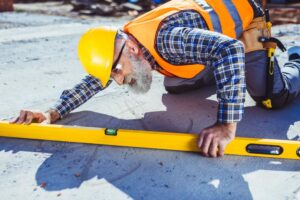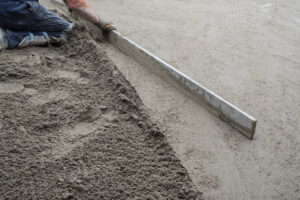A well-maintained and leveled driveway not only adds to the curb appeal of your property but also ensures a smooth and safe passage for vehicles. Over time, driveways can develop uneven surfaces due to various factors such as weather conditions, soil settling, tree roots, or heavy vehicle traffic. Driveway leveling is the process of restoring a flat and even surface to the driveway, eliminating hazards and enhancing both functionality and aesthetics.

In this article, we will delve into the importance of driveway leveling, methods employed, benefits, and professional assistance for this essential maintenance task.
Importance of Driveway Leveling: Driveway leveling is crucial for several reasons. Firstly, an uneven driveway poses a significant safety risk, particularly for vehicles and pedestrians. Uneven surfaces can cause tripping hazards and increase the likelihood of accidents, especially during rainy or icy conditions. Secondly, a level driveway promotes efficient water drainage, preventing pooling and potential water damage. Water accumulation can lead to cracks, potholes, and degradation of the driveway’s structural integrity. Additionally, a level driveway makes snow removal easier, reducing the chances of damage caused by plows or shoveling. Lastly, a well-maintained and leveled driveway improves the overall appearance of your property, enhancing its curb appeal and potentially increasing its value.
Methods for Driveway Leveling: Driveway leveling can be accomplished using various methods, depending on the severity of the unevenness and the underlying causes. Here are some common techniques employed by professionals:
- Resurfacing: If the driveway surface is relatively intact with minor irregularities, resurfacing can be a cost-effective option. This process involves adding a new layer of asphalt or concrete over the existing surface, leveling out any depressions or cracks.
- Mudjacking: Also known as slab jacking or concrete lifting, mudjacking is suitable for driveways with sunken concrete slabs. In this method, a slurry mixture is injected beneath the sunken slabs, raising them to the desired level. The slurry typically consists of cement, sand, and other additives.
- Grinding and Milling: When the driveway has small bumps or unevenness, grinding or milling can be employed. This process involves using specialized equipment to shave off the high points, resulting in a smooth and level surface.
- Excavation and Repaving: In cases of severe damage or unevenness, excavation, and repaving may be necessary. This method involves removing the existing driveway entirely and starting from scratch. It allows for a complete reconstruction, ensuring a level surface and addressing any underlying issues.
Benefits of Driveway Leveling: The benefits of driveway leveling go beyond aesthetics and safety. A leveled driveway offers improved functionality, longevity, and cost savings. By eliminating tripping hazards and reducing the risk of vehicle damage, it enhances safety for both residents and visitors. Additionally, a leveled driveway prevents water accumulation, mitigating potential damage caused by erosion, cracking, or potholes. Regular maintenance and leveling can extend the lifespan of the driveway, reducing the need for costly repairs or complete replacements.

Moreover, a well-maintained driveway contributes to the overall visual appeal of your property. A smooth and level surface enhances curb appeal, making a positive first impression on guests or potential buyers. It can also increase the value of your property, as an attractive and functional driveway is a sought-after feature in real estate.
Professional Assistance for Driveway Leveling: While some homeowners may opt for a DIY approach, driveway leveling is best left to professionals who possess the necessary expertise and equipment. Hiring professionals ensures the job is done efficiently, and accurately.
Learn more at Wiki as well.
